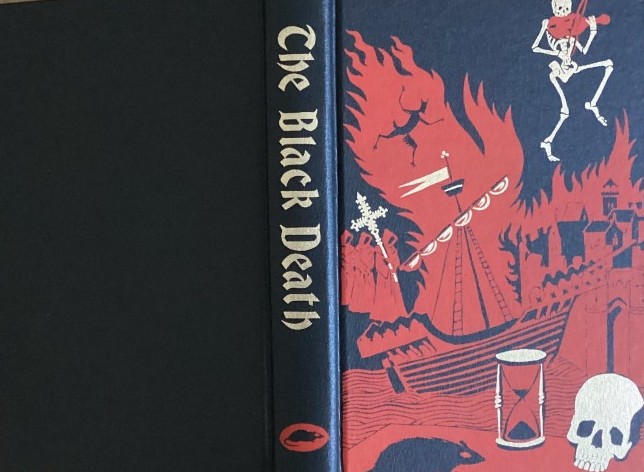Inspiring Older Readers
 posted on 14 Feb 2023
posted on 14 Feb 2023
The Black Death by Philip Ziegler
Philip Ziegler’s The Black Death was originally published in 1969 and I remember buying a copy of the Pelican paperback edition when it was released sometime in the 1970s. Ziegler’s book didn’t seek to present any new, original research but took on the mammoth task of bringing together and reshaping the lessons from the work of others. This kind of accessible and more populist literature review is a tough act to pull off because writing for the lay reader requires the author to find a way of presenting what might be indigestible academic detail in a format that carries the reader along on a strong narrative thread. On the whole I always felt Ziegler’s book did achieve that despite the occasionally plodding feel of the prose and I remember being astonished at the sheer enormity of the carnage wrought by the pandemic we refer to in shorthand as ‘The Black Death’.
In the wake of our very own pandemic I remember reading somewhere that Ziegler’s book had enjoyed something of a resurgence in popularity during the lockdown months and (late as ever) I thought I too should revisit the work to see if the parallels are there and whether they offer any lessons. The edition I have now is the 1997 Folio Society edition which benefits from a new preface written by the author. In this foreword he acknowledges that he went into this endeavour as an enthusiastic amateur – he had no background in Medieval studies – and because despite his expectations, there was at that time no other book that had tried to take a single, unified overview of this devastating pandemic – a medical disaster that entirely reshaped societies across Europe and the Middle East. As Ziegler himself puts it in this 1997 preface:
“This book remains today, as it was in 1969, the only twentieth-century of the Black Death which aspires to cover every significant contribution made by students of the period and yet to provide a narrative that is accessible to the layman.”
A quick Google search will be enough to tell you that things have changed since Ziegler wrote these words and there are now quite a number of books offering a similar overview. And, it has to be said, the state of medical and historical research has moved on substantially and the best assumptions of scholars about the genesis, nature and movement of the Black Death as they stood back in the late 60s and early 70s are now under scrutiny and challenge. What seemed to be a settled idea about where the disease came from and how it transmitted are now the matter of dispute but that really doesn’t damage the value for me of Ziegler’s study.
The book is still fantastically instructive in the way it describes the social impact of the disease rather than the medical origins and manifestations. Graphic descriptions of the carnage and the horror of the disease on individuals and families is of course gruesomely fascinating:
“All the citizens did little else except to carry dead bodies to be buried… At every church they dug deep pits down to the water-table; and thus those who were poor who died during the night were bundled up quickly and thrown into the pit. In the morning when a large number of bodies were found in the pit, they took some earth and shovelled it down on top of them; and later others were placed on top of them and then another layer of earth, just as one makes lasagne with layers of pasta and cheese.”
But, in truth, it is the impact of the arrival of the disease into communities that most captured my attention this time around. The arrival of this pandemic onto the shores of Europe – cutting a swathe through Italy – seems eerily familiar in the age of Covid and Ziegler’s methodical harnessing of research and literary sources paint a picture of a population reacting to the threat in ways that are like watching the shadows of our own often irrational response to deadly infections we feel we cannot understand or control. When a President of the United States can suggest that intravenous injections of bleach might be a way to cleanse the Covid infection from our bodies, it’s pretty clear we are still live in a society not that far removed from our Medieval ancestors.
Academic critics focussed much of their criticism of Ziegler’s work on his decision to construct a case study to demonstrate the holistic impact of the arrival of the plague on a whole village. This, the purists argued, was the illegitimate introduction of fiction into what should have remained factual and descriptive and, yes, that is indeed what he does. But for me, as a non-academic, this imaginative leap is welcome. Statistics, facts and figures, are important but taken out of their lived context they soon fail to register as real things and I think Ziegler’s instinct to illustrate the real-world consequences is a sound one.
Paperback copies of the book in a new edition are available for well under £10 if you want to read some history that has a profound resonance for the present.
Terry Potter
February 2023